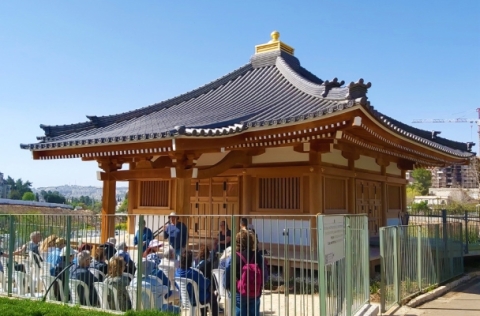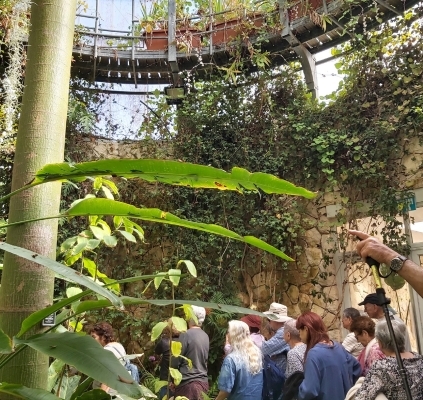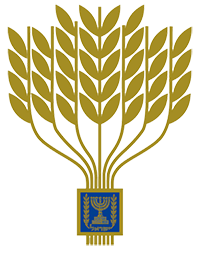Jerusalem Botanical Gardens
Jerusalem is known as the City of Gold, and after a recent visit to the extensive, exotic Jerusalem Botanical Gardens, it can also be described as one of truly magical sights and sites. The Gardens offers access to the wondrous world of nature, with displays of exotic plants, flowers, fruits and more – and all arranged by geographical regions, altogether the Gardens is home – and often home away from their natural home – to some 7,000 different species, spread over an area of around 30 acres.
Inside the Gardens, Mother Nature's paintbox embraces multiple shades of greenery and a dab of every color imaginable, in the open air and in the tropical conservatory and gallery. This is not just an ornamental garden – in fact, it is the largest botanical garden in the Middle East. It offers a stupendous space where plants from different continents show off their brilliant shapes, sizes and colors, and are admired by visitors of all ages. They include rare and endangered species, as well as edible plants and others with healing properties, or those that are just purely decorative.
Fondly addressed as "The JBG" by a colleague, indeed the Gardens are an enormous, eye-popping site where folks can view the largest collection of living plants to be found in one place in the whole of the Middle East. The Gardens are also thoroughly appreciated by a plethora of different species of birds and other wildlife, who frequently visit to check out what's ablooming!
The plants are carefully nurtured and monitored, and research is conducted in cooperation with other botanical gardens elsewhere in the world, with the collective results contributing in many different ways to science, economy and horticulture globally.
A local guide leading a group of young retirees from the Lower Galilee – some serious gardeners and nature lovers amongst them – points out that some of the plants can be called 'Jerusalemites', since they were resident in the area even before the garden was established in 1964. Others have been collected from various other regions of Israel, as well as many species from around the globe.
Planting of the Jerusalem Botanical Gardens began in the mid-1950s at the present day Givat Ram site, but it was only opened to the general public in the mid-1980s. Prior to the 1948 War of Independence, the site, then known as the National Botanical Gardens, was situated on Jerusalem's Mount Scopus, but as a result of that war, access became impossible.
As well as the flowers, bushes and shrubs that bloom across the enormously attractive and incredibly embracing landscape, there are also eye-catching corners. For example, a bonsai collection is situated in front of a beautiful, exotic and expertly crafted Japanese pagoda with characteristic eaves and sweeping lines – the building painstakingly created by talented craftsmen in their home country. The pagoda was commissioned by the Japanese Friends of Israel organization. The modular pieces were created in Japan, shipped to Israel and constructed on-site at the Botanical Gardens by specialists. Nowadays the building is a focal point for a substantial collection of plants from Japan.
Cameras are perched on a pole at the top of a small bank of earth opposite the pagoda's main entrance, enabling the Japanese supporters of Israel to check in with what is going on at their Jerusalem Botanical Gardens site whenever they wish. Upon being told this, the visitors from northern Israel promptly turned to the camera and waved in unison to whomever was watching from afar.
The tropical conservatory looks decidedly futuristic from the outside, while the inside is brimming over with exotic orchids and other plants, alongside fruits such as papaya and gigantic banana plants, which have fruit hanging far above one's head appearing to be almost family size by itself.
An area known as the "Bible Path" contains species of plants that scientists have deemed as having been mentioned in the Bible, and the Botanical Gardens also boasts a living plant gene bank dedicated to the region's native flora.
A spanking new, bright green electric train, with comfortable carriages, takes visitors on a journey in, about and around the spread-out areas of the Gardens. Along the way, the on-board guide gives fascinating explanations as one passes archaeological discoveries, such as Roman burial caves from the Second Temple period that were discovered during landscaping. Within the Tropical Conservatory another historical site was uncovered – that of a columbarium.
A new project, currently under construction and adding another 4,300 square feet of space to the Gardens, consists of a series of interconnected domes that, when completed, will form the new main entrance to the Gardens hosting around 300,000 visitors annually. When finished, it will also include a space for sub-tropical plants, an outdoor classroom and more, as well as a main stop for the very popular bright green, shiny Vivien's Train.
The huge project is funded through a partnership with the Jerusalem Foundation and the Jerusalem Municipality. The new gateway building is to be known as the Marcus Margulies Pavilion, in recognition of the London-born philanthropist and supporter of the Jerusalem Botanical Gardens.










Comments